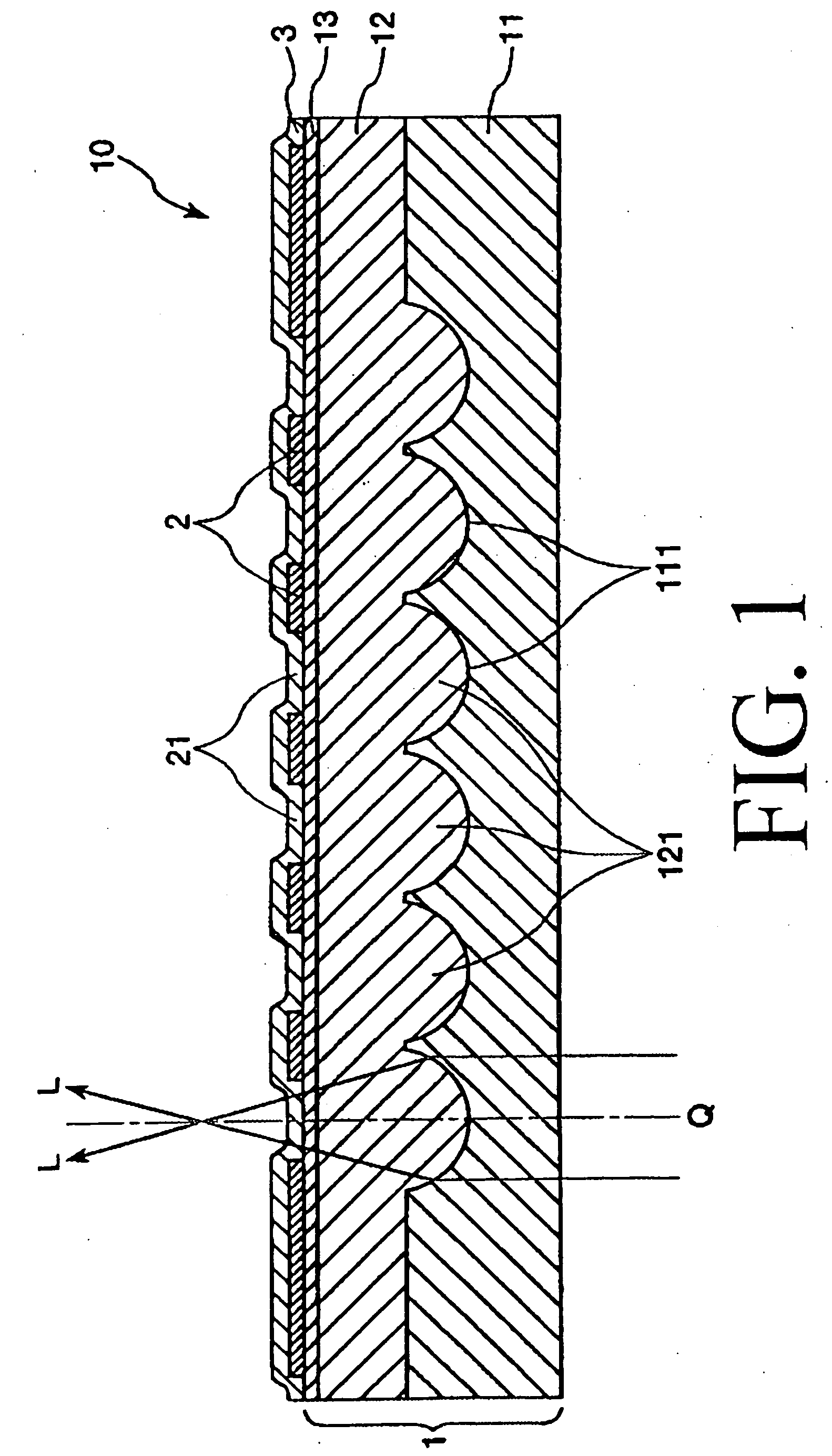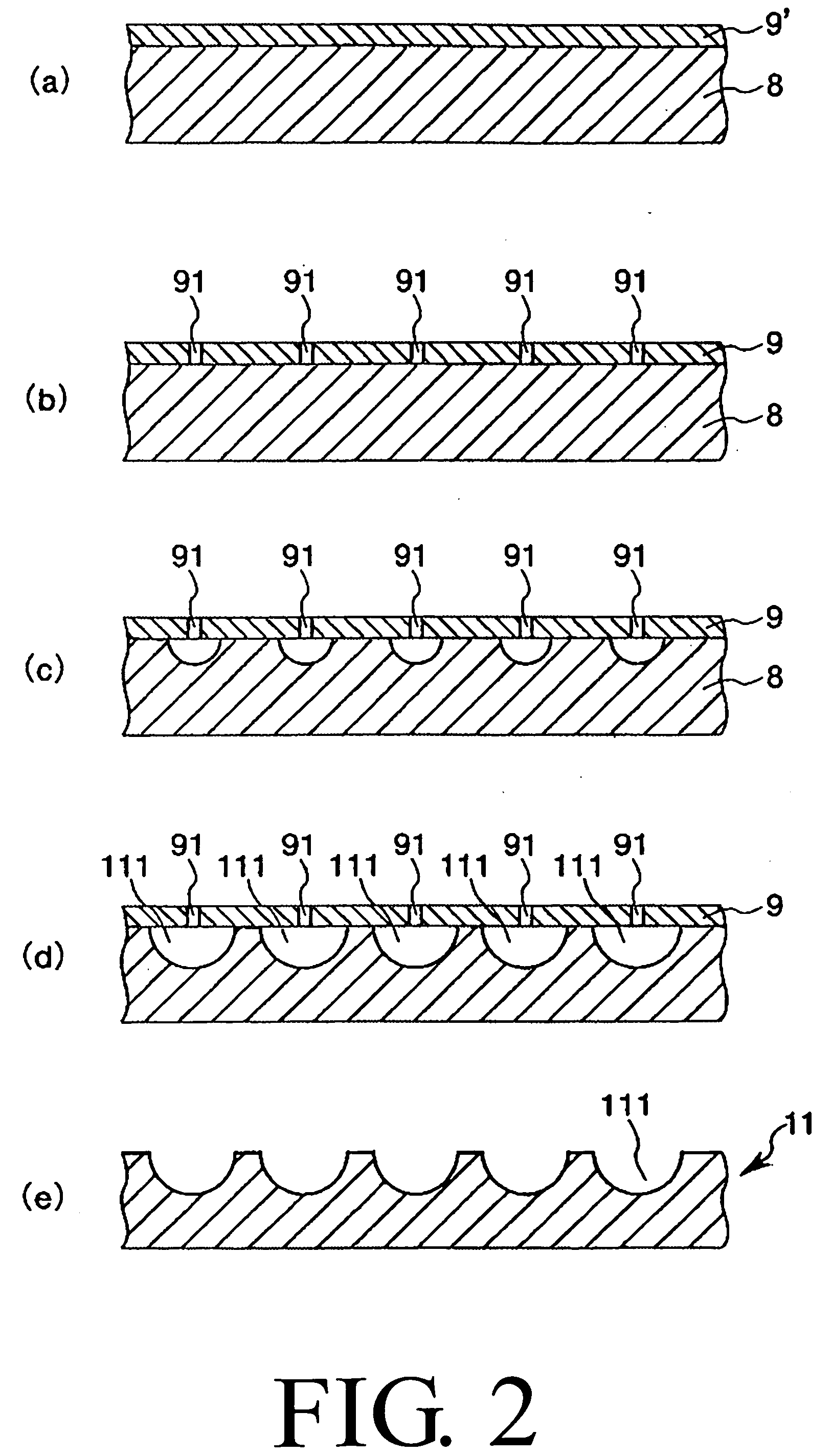Microlens substrate, a method for manufacturing the microlens substrate, a liquid crystal panel, and a projection type display apparatus
a technology of liquid crystal panel and microlens substrate, which is applied in the direction of identification means, instruments, projectors, etc., can solve the problems of deterioration of the product quality of the manufactured opposed substrate for affecting the manufacturing cost of the liquid crystal panel, and taking a considerable long time to manufacture the microlens substrate. achieve excellent optical characteristics and durability
- Summary
- Abstract
- Description
- Claims
- Application Information
AI Technical Summary
Benefits of technology
Problems solved by technology
Method used
Image
Examples
example
Example 1
[0202] A substrate with concave portions provided with a plurality of concave portions was manufactured, and then a microlens substrate was manufactured using the substrate with concave portions in the following manner.
[0203]
[0204] First, a quartz glass substrate (which has an index of refraction of 1.46) having a thickness of 2 mm was prepared as a glass substrate.
[0205] The quartz glass substrate was soaked in a cleaning liquid (that is, a mixture of 80 vol % sulfuric acid solution and 20 vol % hydrogen peroxide solution) heated to 85° C. to be washed, thereby cleaning its surface.
[0206] Next, Cr films each having a thickness of 0.03 μm were formed on the quartz glass substrate by means of a spattering method. Namely, a film for forming a mask and a rear face protective film formed of the Cr films were formed on the both major surfaces of the quartz glass substrate.
[0207] Next, a laser machining was carried out with respect to the film for forming a mask, whereby a l...
example 2
[0232] Microlens substrates (total 100 pieces) were manufactured in the same manner as in the Example 1 described above except that as a composition for forming the convex lens substrate, a composition mainly constituted of an organic-inorganic composite material (epoxy resin-silica composite material) was used. In this Example 2, an index of refraction of the constituent material of the convex lens substrate was 1.57. Further, an amount of silica contained in the epoxy resin-silica composite material was 35 wt %, and an amount of the epoxy resin contained in the epoxy resin-silica composite material was 65 wt %.
examples 3 and 4
[0233] In each of the Examples 3 and 4, microlens substrates (total 100 pieces) were manufactured in the same manner as in the Example 1 described above except that initial hole formation condition and etching condition against the a mask formation film when manufacturing the substrate with concave portions as well as composition of the coating layer formation composition and the amount of the supply of the composition were changed so that the composition, properties and thickness of the convex lens substrate were changed.
PUM
| Property | Measurement | Unit |
|---|---|---|
| viscosity | aaaaa | aaaaa |
| thickness | aaaaa | aaaaa |
| wavelength | aaaaa | aaaaa |
Abstract
Description
Claims
Application Information
 Login to View More
Login to View More - R&D
- Intellectual Property
- Life Sciences
- Materials
- Tech Scout
- Unparalleled Data Quality
- Higher Quality Content
- 60% Fewer Hallucinations
Browse by: Latest US Patents, China's latest patents, Technical Efficacy Thesaurus, Application Domain, Technology Topic, Popular Technical Reports.
© 2025 PatSnap. All rights reserved.Legal|Privacy policy|Modern Slavery Act Transparency Statement|Sitemap|About US| Contact US: help@patsnap.com



